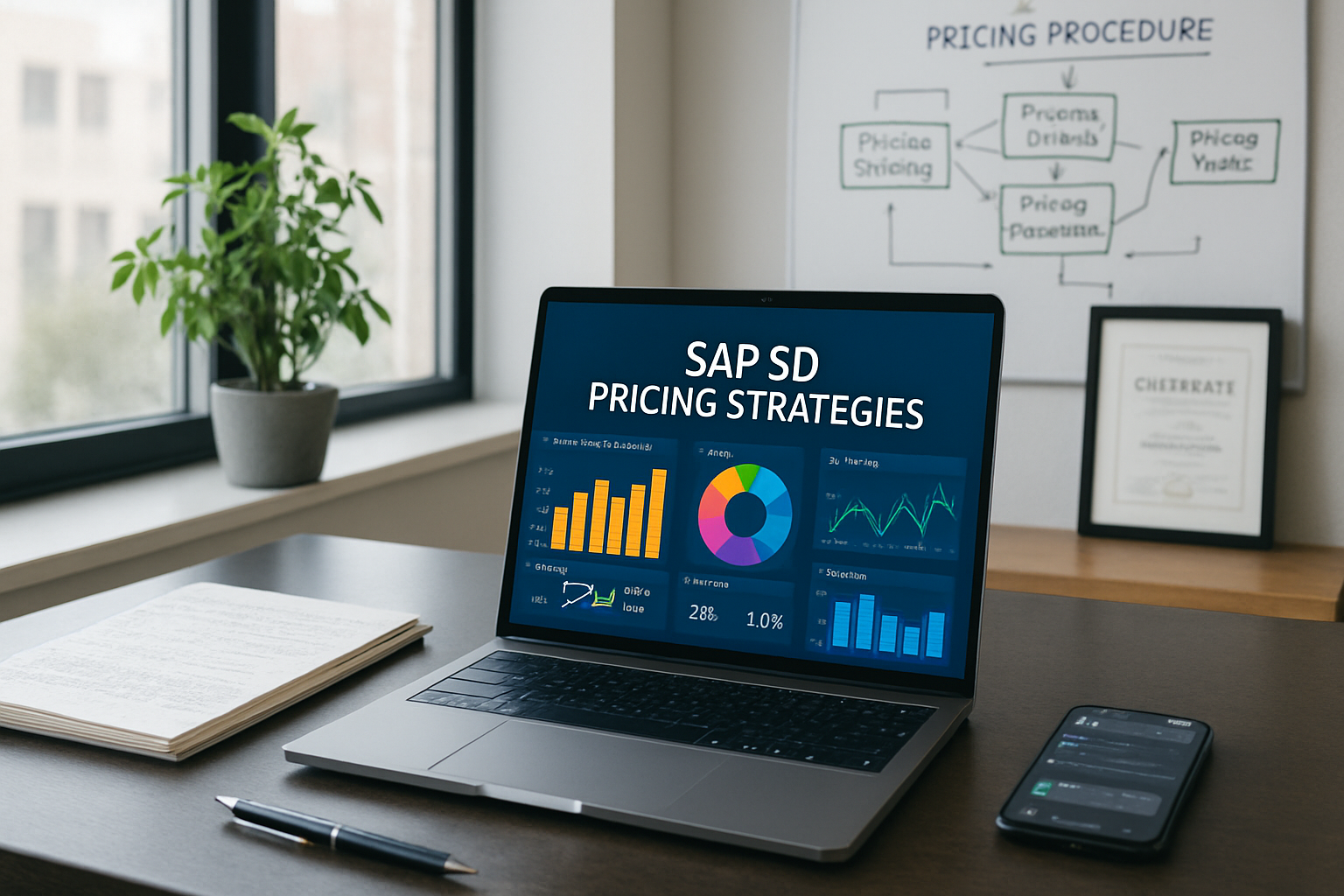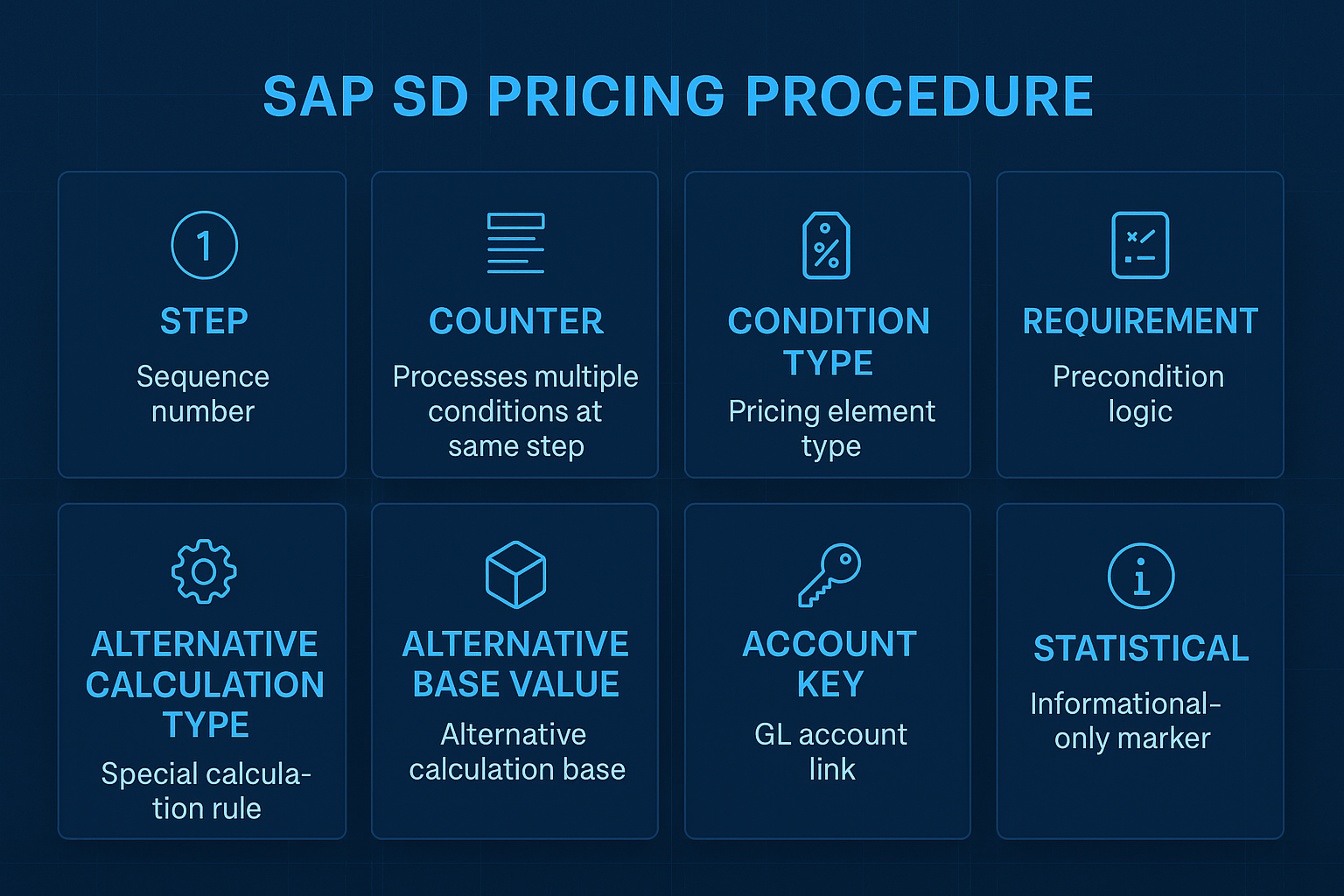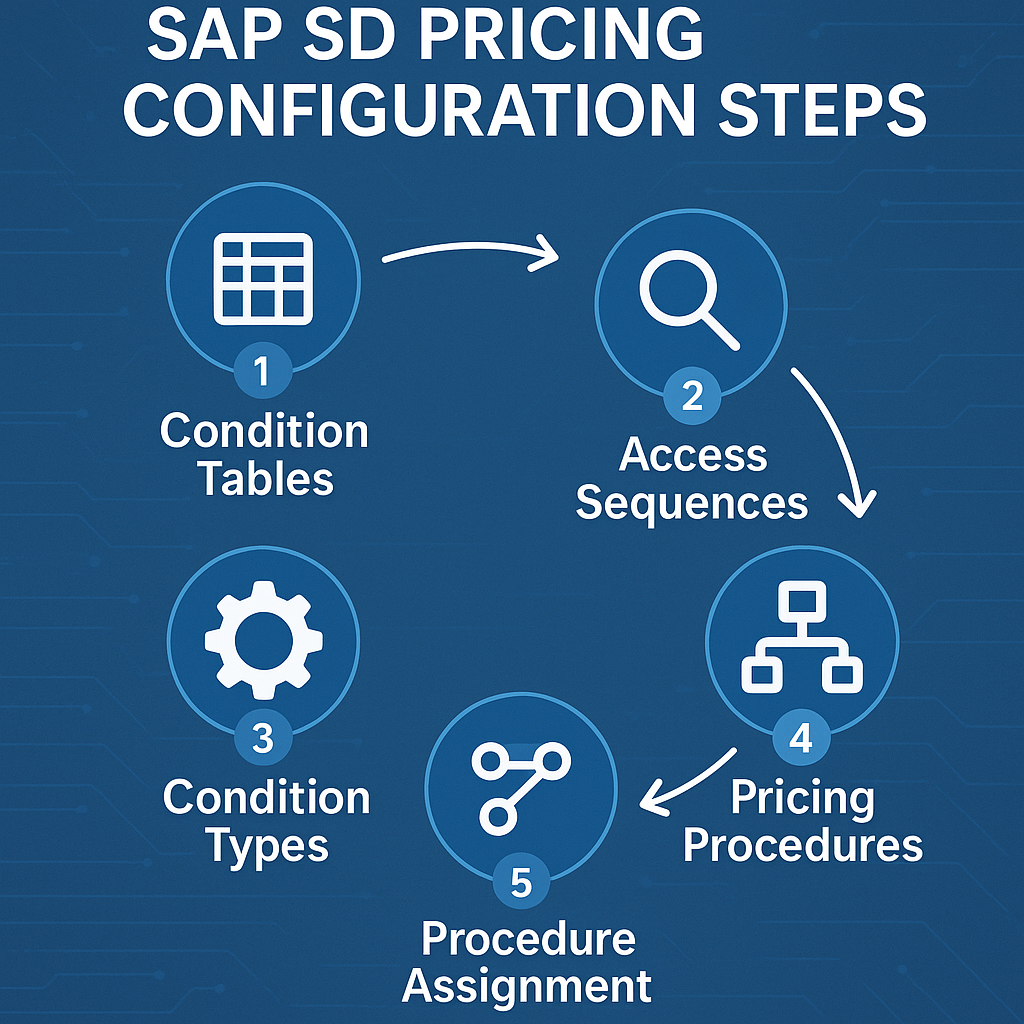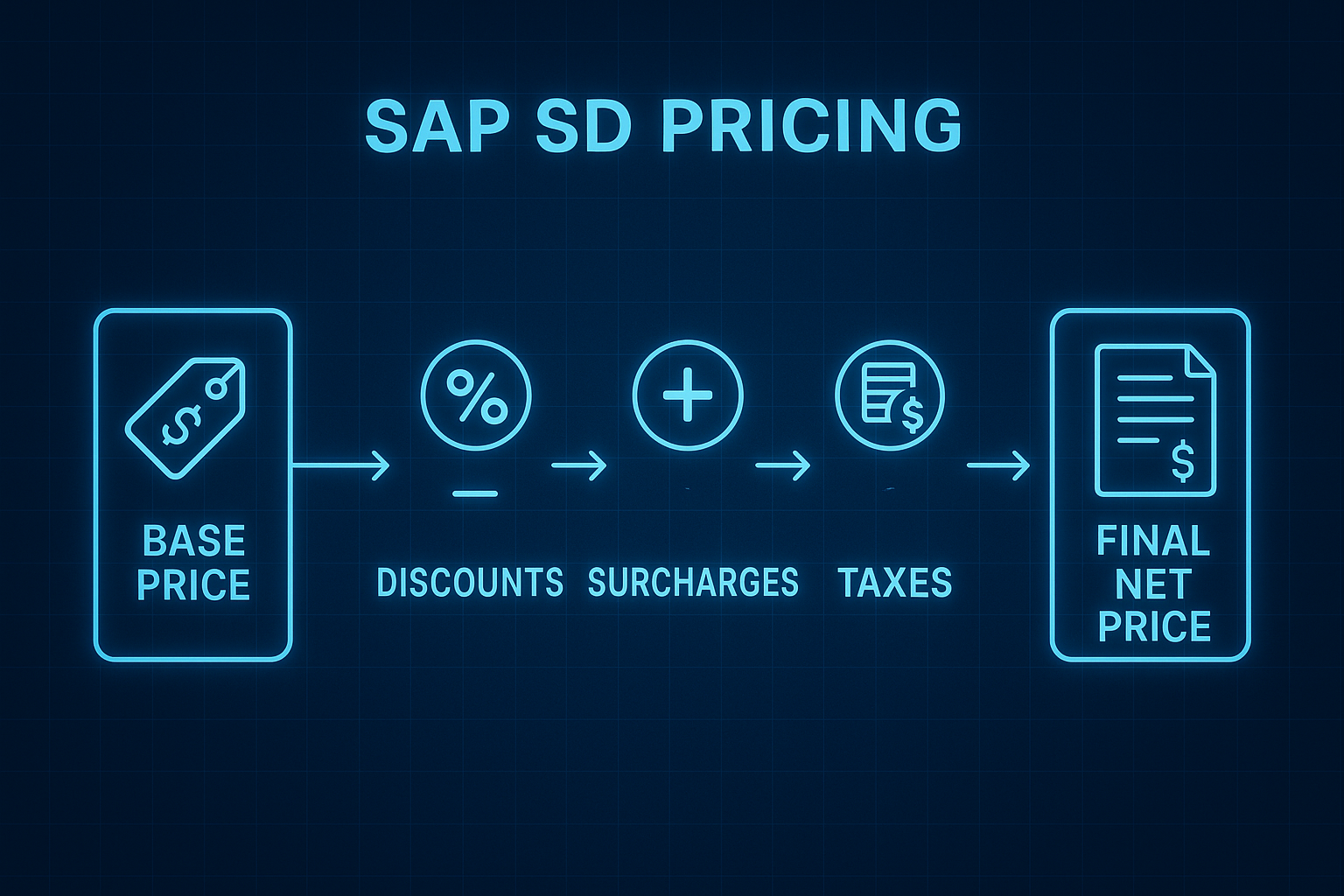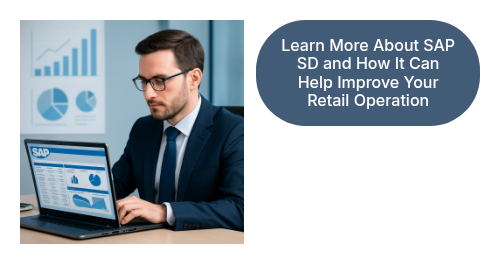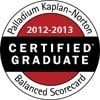Getting pricing right is not just an operational task; it is the bedrock of your company's financial health. Precision in your SAP SD pricing can be the difference between protecting your profit and watching it disappear. A well-designed pricing procedure engine boosts revenue, strengthens margins, and builds lasting customer trust.
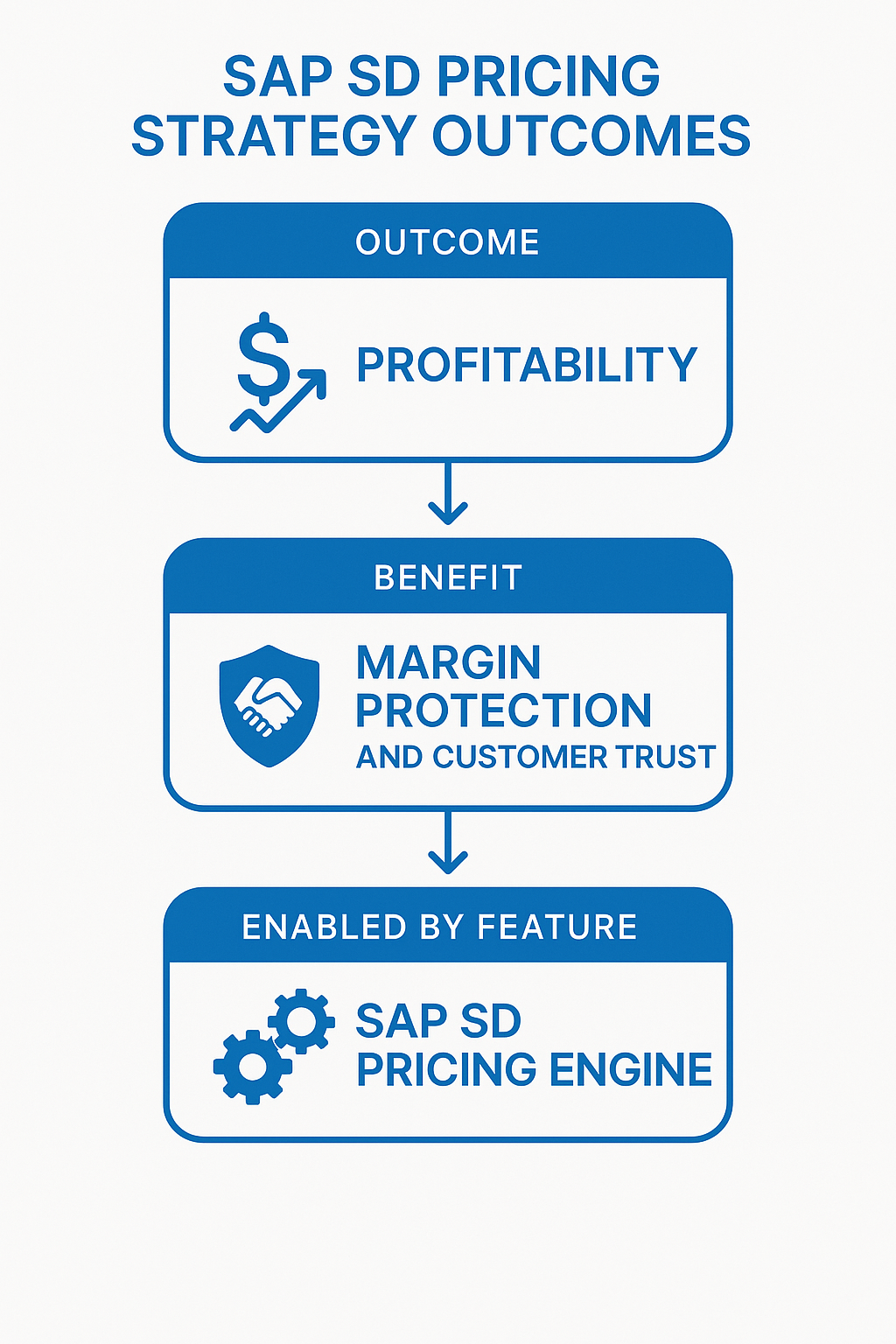
My name is Lonnie Ayers, and as a PMP and global SAP Project Manager, I have spent years in the trenches. I have implemented pricing strategies for giants in Aerospace, Retail, and Wholesale Distribution. I have seen firsthand how a small tweak in configuration can have a massive impact on the bottom line.
Learn how optimized pricing boosts profitability.
Why Pricing Is the Heart of SAP Sales & Distribution
Pricing as a Strategic Lever
Accurate pricing is more than just a number on an invoice. It directly drives how profitable you are and how you stack up against the competition. Get it right, and you create a powerful advantage in the market.
Think about complex industries where variable factors constantly change. In Aerospace & Defense, even tiny pricing errors in project billing can cause huge problems across multi-year contracts. A small mistake today can cost millions tomorrow, making effective pricing control essential.
How SAP SD Controls Pricing
SAP Sales and Distribution (SD) is the central point for managing your pricing and handling the underlying business processes. It sits between sales, finance, and customer service, providing the basic functions for pricing management. This is where you control everything from the base price to special discounts and complicated rebates for all customer orders.
The system uses a flexible framework to determine the final price calculated for a sales document. This framework considers the sales area, customer master data, and specific order attributes. Proper configuration of SAP SD pricing is fundamental for any sales organization.
The SAP Condition Technique Explained
You may hear people talk about the SAP condition technique. It is the core logic SAP uses to figure out prices automatically. It sounds complicated, but it is really a set of rules that tells the system how to define pricing for any given scenario.
Foundation Concepts
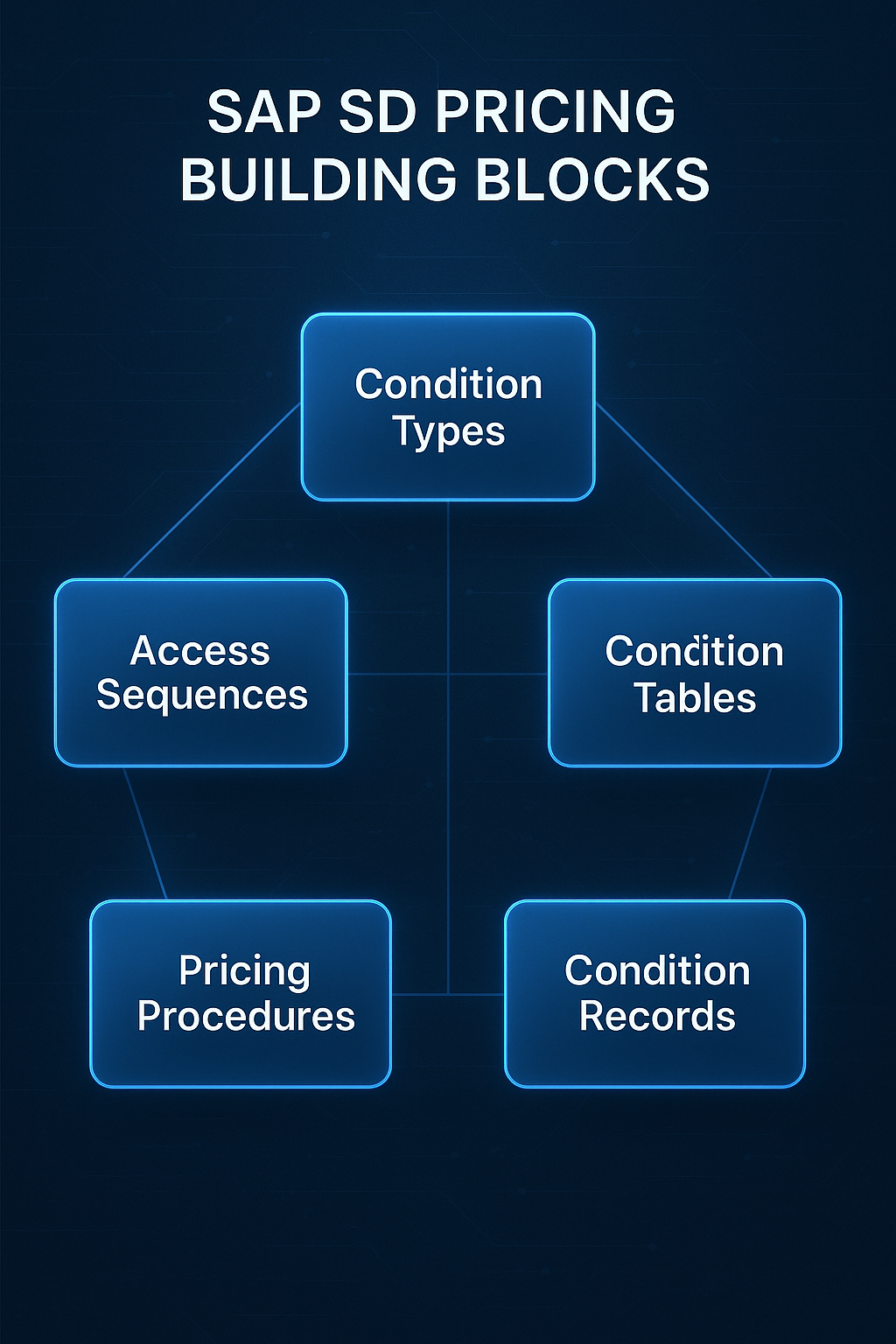
The system uses five main building blocks to define pricing procedures. Understanding these components is the first step to mastering SAP SD Pricing and creating a standard pricing procedure. It is the foundation for everything else you will build, from simple price lists to complex discount structures.
A condition type represents a specific pricing element, like a base price (PR00), a discount (K004), or tax (MWST). Each condition type has a type description and settings that control its behavior, such as its calculation type (e.g., percentage, fixed amount, quantity-based). You can also define which condition types permitted in your pricing logic.
An access sequence is a search strategy assigned to a condition type that tells the system where to look for a valid price. It checks different condition tables in a specific, predefined order until it finds a valid condition record. Many blog posts on SAP SD discuss the importance of an efficient access sequence.
Condition tables are where the actual pricing records are stored. For example, a table might hold prices for a specific customer and material combination, using key fields from the sales organization or product hierarchy. The system uses these tables to find the right pricing condition for a sales order.
Pricing procedures are a sequence of condition types that the system follows to calculate the final price for a document. It is the framework that brings all pricing elements together in the correct order. The configuration of pricing procedures is a critical part of SD pricing procedure management.
The condition record is the master data of pricing, containing the specific values for a condition type. For instance, a condition record might state that material 'XYZ' has a price of $100 for a particular customer group. You create condition records to populate your condition tables.
Step-by-Step Pricing Example
Let's walk through a simple sale to see how this works. Imagine a customer places a sales order for a product. SAP's pricing engine quietly gets to work behind the scenes.
- First, the system finds the base price using condition type PR00 based on the search strategy in its access sequence.
- Next, it checks if a special discount applies, maybe for a loyal customer using condition type K004, which is found in a relevant condition table.
- Then, it might add a freight charge to cover shipping costs (KF00), a common type condition for deliveries.
- Finally, it calculates the correct sales tax based on location (MWST), another key pricing condition.
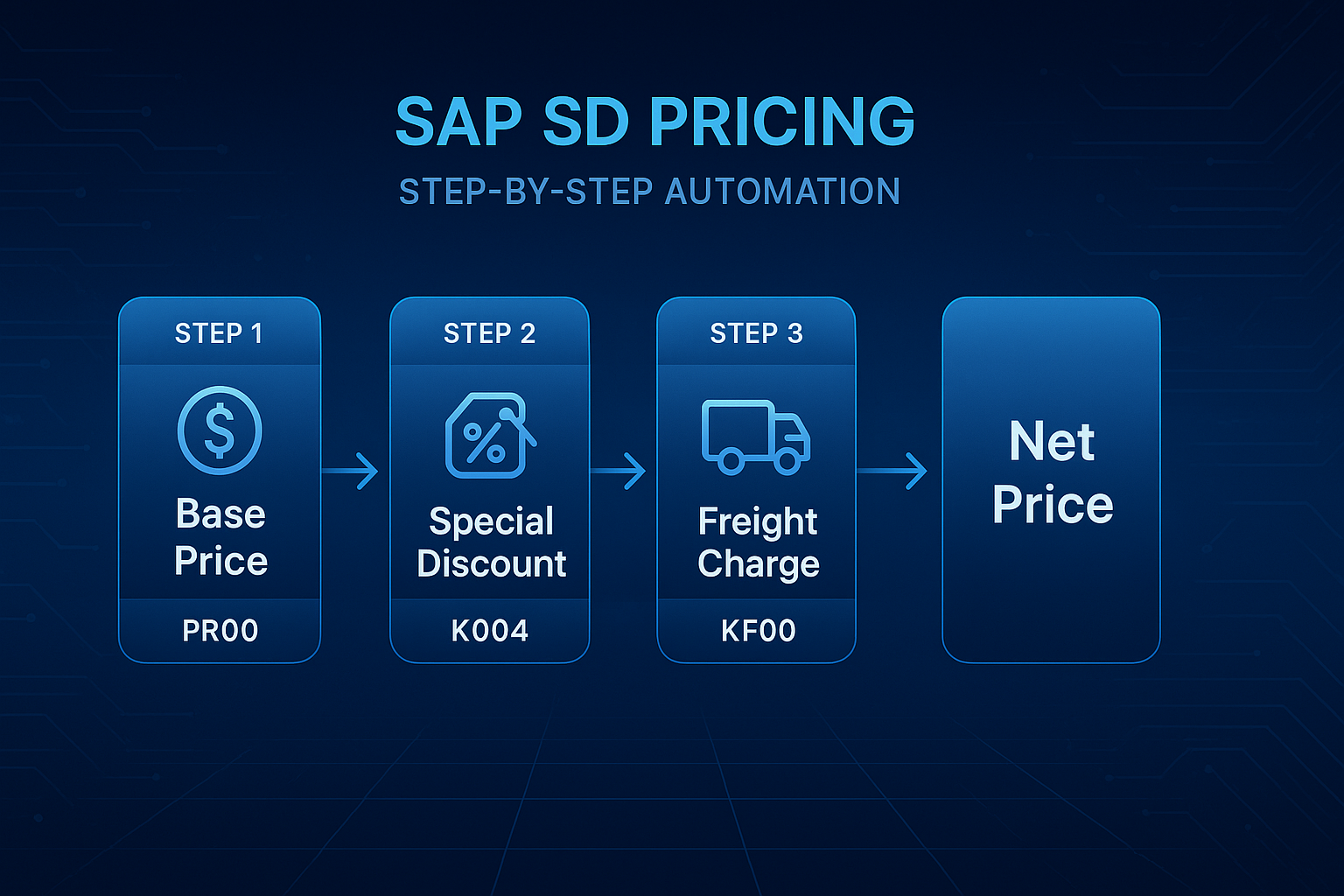
These elements all come together in the pricing procedure determination. The final result is the net price that your customer sees. This automation avoids manual errors and keeps everything consistent across every sales document.
Inside the Pricing Procedure — The Control Center
Think of the pricing procedure as the control center for your entire pricing setup. It is a list of steps SAP follows every single time a sales order is created. Getting this configuration right is critical for accurate document pricing.
How Pricing Procedures Work
A procedure is just a sequence of conditions that tells SAP which prices, discounts, and surcharges to apply, and in what order. Fields within the procedure give you granular control over the final calculation. A common practice is to copy existing standard pricing procedures and modify them for specific needs.
The structure of a pricing procedure includes several important control columns. Understanding these fields is essential to define a pricing procedure correctly. Below is a breakdown of the key columns you will encounter.
| Column | Description |
|---|---|
| Step | A number that defines the sequence in which the condition types are processed. |
| Counter | A procedure counter used to process multiple conditions at the same step. |
| Condition Type | The specific condition type (e.g., PR00 for price, K007 for customer discount). |
| Requirement | A routine that checks if a certain condition must be met before the condition type is processed. |
| Alternative Calculation Type | A formula that can be used for an alternative calculation of the condition amount instead of the standard one. |
| Alternative Base Value | A formula that determines an alternative base value for the calculation of a condition. |
| Account Key | This key directs the value of a condition type to the correct G/L account in Financial Accounting. |
| Statistical | A checkbox indicating that the condition is for informational purposes and does not alter the net value. |
Using these fields, you can build complex logic, such as applying a discount only if the order quantity exceeds a certain amount. The account key is especially important for financial integration. An alternative calculation can be used for more complex scenarios like tiered discounts.
Configuration Highlights
Setting up your pricing procedure configuration involves several key steps. While the details can get deep, the high-level process is logical and sequential. Proper setup from the start prevents future pricing issues.
- Define your Condition Tables to hold your pricing data, considering fields like sales organization, distribution channel, and customer group. Using the tables transaction codes (V/03, V/04, V/05) is the standard method.
- Create Access Sequences to guide the system's search for that data, ordering your condition tables from most specific to most general.
- Maintain your Condition Types, which represent each pricing component, ensuring the calculation type and other settings are correct.
- Define the Pricing Procedures that bring all the condition types together into a coherent calculation flow.
- Assign the correct procedure based on a combination of Sales Area, Customer Pricing Procedure, and Document Pricing Procedure. This is the core of pricing procedure determination.
Each step builds on the last, creating a structured foundation for your system. The final assignment, or procedure determination, connects the customer master, the sales document type, and the sales area to the correct pricing logic.
Industry Perspective
Different industries have different needs, which require different pricing conditions. In heavy manufacturing, custom freight conditions and discounts based on order quantity are common. This means you need procedure variations designed for each plant and sales organization distribution channel.
For a retail business, promotional pricing and fast-moving consumer discounts are more important. The flexibility of the pricing procedure allows you to cater to these different business processes within the same SAP ERP system. Your customer pricing approach must align with your industry's demands.
Discounts, Surcharges & Taxes — Beyond the Base Price
A customer's final price is almost never just the base price. The real power of SAP SD pricing comes from its ability to handle all the additions and subtractions that happen along the way. This flexibility is what allows you to support complex business needs and apply different pricing for different scenarios.
Customer and Material Discounts
You probably offer different prices to different customers. You can easily set up customer-specific discounts (K004) or material-specific discounts (K007). This lets you reward high-volume buyers or run promotions on certain products, applying specific standard pricing where needed.
Freight and Surcharges
What about costs you need to pass on to the customer? You can use conditions for things like freight (KF00) or fuel surcharges. Many of these can be set as 'statistical,' meaning they are part of the calculation but do not change the net value of the item itself, though they are visible on billing documents.
Tax Determination
Tax is another big piece of the puzzle, especially for global companies. SAP calculates tax using factors like country, region, and the tax classification of the customer and material. For a global retailer, this automatic determination is essential for staying compliant across many different tax jurisdictions and assigning the correct billing type.
Advanced Scenarios — Rebates, Promotions & Free Goods
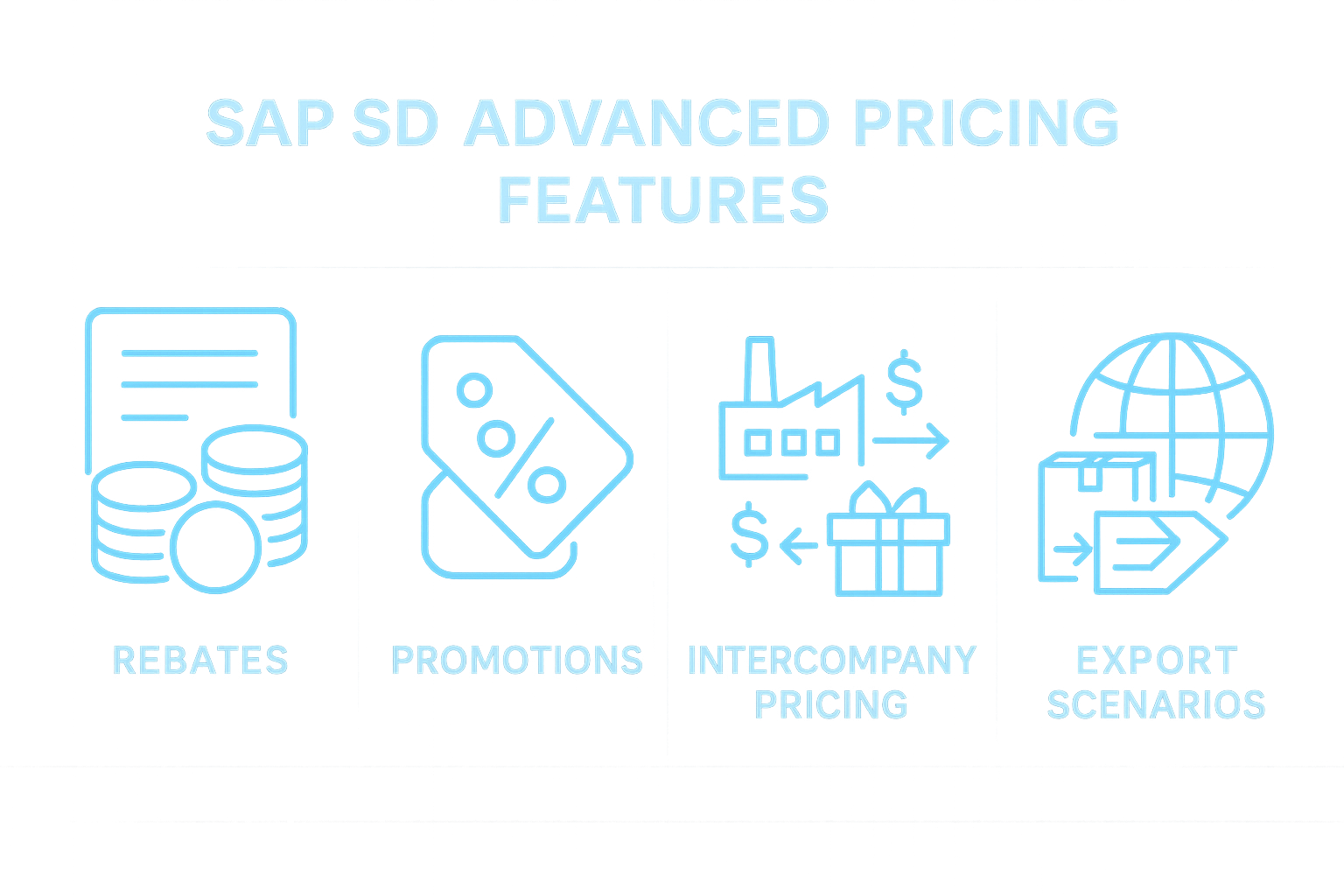
Once you have the basics down, you can start using SAP for more advanced pricing strategies. This is where you can get creative with your sales and marketing efforts. The system is built to handle far more than simple discounts on an order type.
Rebate Agreements & Condition Contracts
Rebates are a common tool in many industries. Historically, businesses managed rebate agreements in SAP ECC using transaction VBO1. These agreements reward customers for hitting certain sales volumes over time.
With S/4HANA, this has changed, and rebate processing is now handled by a more powerful tool called Condition Contracts. A wholesale distributor, for example, can use Condition Contracts to track and settle volume-based rebates retroactively at the end of a quarter. This provides better visibility and control over accruals.
Promotional Pricing and Free Goods
The SAP condition technique is great for running special campaigns. You can set up bundled offers, like 'buy one get one free,' or time-based promotional pricing. A word of caution: it is important to control any manual condition overrides to these promotions to keep a clean audit trail.
Intercompany Pricing & Export Scenarios
For large companies that operate globally, pricing gets even more interesting. You have to manage transfer pricing between different parts of your own company, often across different countries. The system can also handle foreign exchange considerations for export sales, making sure your international transactions are priced correctly within the correct organization distribution setup.
Governance and Pricing Data Integrity
A powerful pricing engine is only as good as the data you put into it. Without strong governance, your setup can quickly become messy and ineffective. This leads to mistakes, lost revenue, and unhappy customers.
Common Pricing Problems
We see the same issues pop up again and again. Companies struggle with duplicate condition records that cause confusion and errors during sales order processing. They also lose money from uncontrolled manual discounts that salespeople apply at the order header or header level too freely.
Outdated rebate agreements are another common source of margin leakage. If you do not stay on top of your master data, you will lose money. It is that simple, and it often requires sap consulting expertise to unravel the problems.
Best Practices for Governance
Good governance can fix these problems. Start by creating a central team that owns all pricing decisions and has the authority to create condition records. You should also use change logs and require approvals for any pricing updates.
Regular audits are a must to find and fix issues before they grow. Finally, use authorization objects to control who can create or change pricing data, limiting access to sensitive transactions. You can find more on SAP authorizations in the SAP Help Portal.
In one global rollout I managed, a lack of central pricing standards was hurting margins badly. We brought everything into alignment and recovered three points of gross margin in just one quarter. This shows how quickly good governance pays off.
Modern Enhancements in S/4HANA Pricing
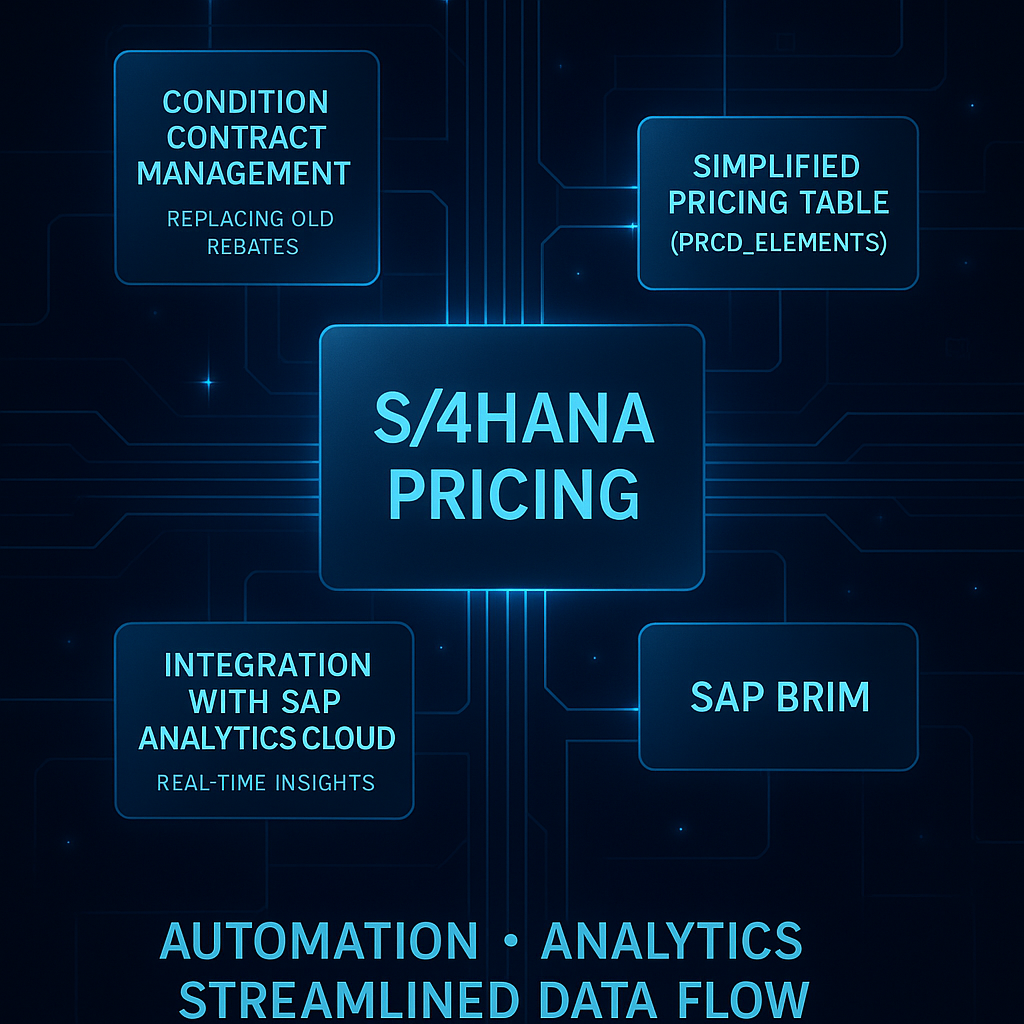
As businesses move to S/4HANA, the approach to pricing is changing. The new platform brings simplifications and powerful new tools. These changes are designed to make your pricing more flexible and give you better insights.
Simplification Highlights
The move to Condition Contract Management is one of the biggest changes, replacing older rebate agreements. The data model for pricing has also been simplified into a single table, PRCD_ELEMENTS, which helps with real-time reporting. Plus, S/4HANA integrates smoothly with tools like SAP BRIM for subscription and usage-based billing models.
Analytics and Optimization
Modern platforms generate a ton of data. You can use tools like SAP BW or SAP Analytics Cloud (SAC) to analyze how effective your pricing is. This lets you track margin trends and see which discounts are actually working and impacting the net price.
Building Your Pricing Excellence Roadmap
Improving your SAP SD pricing is a journey. The key themes are always accuracy, automation, and governance. These efforts directly connect to the business goals that matter most.
Think about key performance indicators like profit margin and discount usage. A solid roadmap will also help you improve your rebate recovery rate. Each step you take to strengthen your pricing process helps protect your profitability.
Learn how optimized SAP SD pricing boosts profitability.
Conclusion
Mastering your SAP SD pricing is no longer just a technical task for your IT department. It is a strategic competency that gives your business a serious competitive edge. A properly tuned pricing architecture aligned with your business goals is one of the most powerful tools you have to drive growth and profitability.
The conditions represent all the factors that influence the final price, and managing them effectively is critical. At SAP BW Consulting, we specialize in helping businesses achieve this alignment. Do not leave money on the table; make your pricing work for you.
Book a meeting with Lonnie Ayers, PMP to discuss your SAP staffing needs, whether SAP SD related or any of the other SAP modules.
Need Expert SAP Consulting Expertise?
Request SAP Consulting and Implementation here.
We are team of top-level SAP consultants, focused on helping you get the most value from your SAP investment. Whether you need a single SAP SD consultant or an entire team of SAP experts, we can provide them. Please our book a meeting service to get started.
